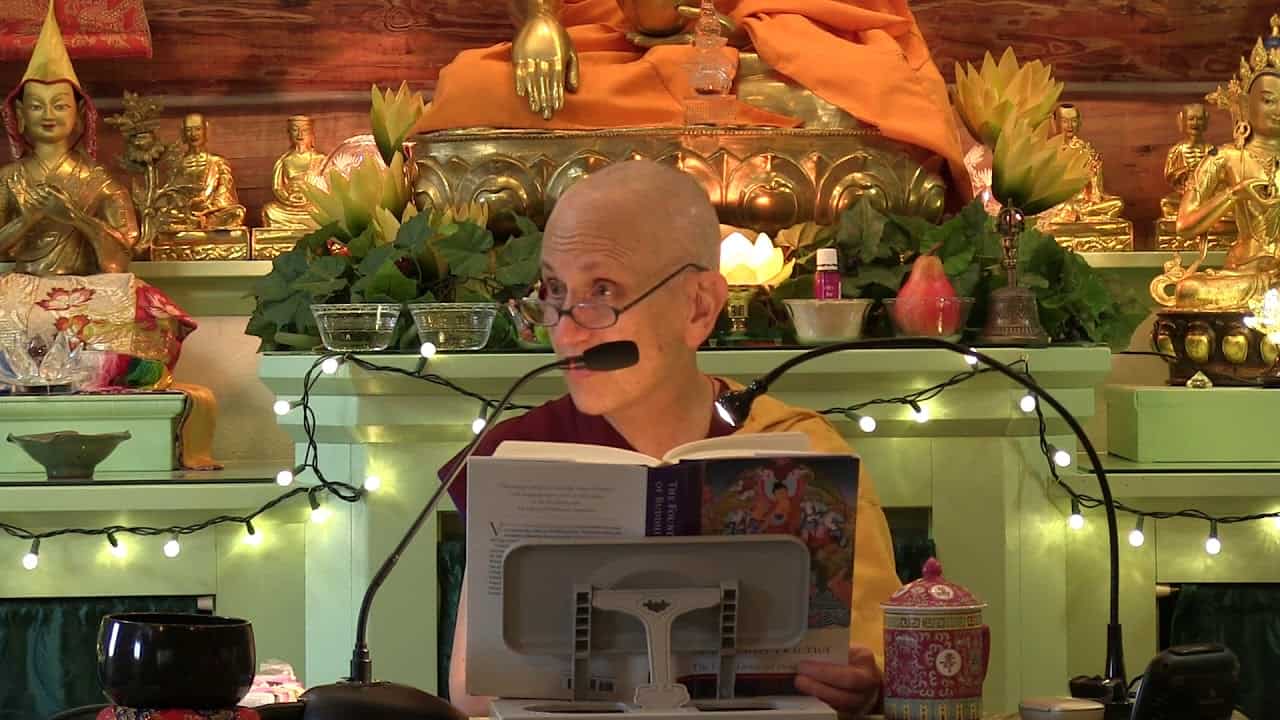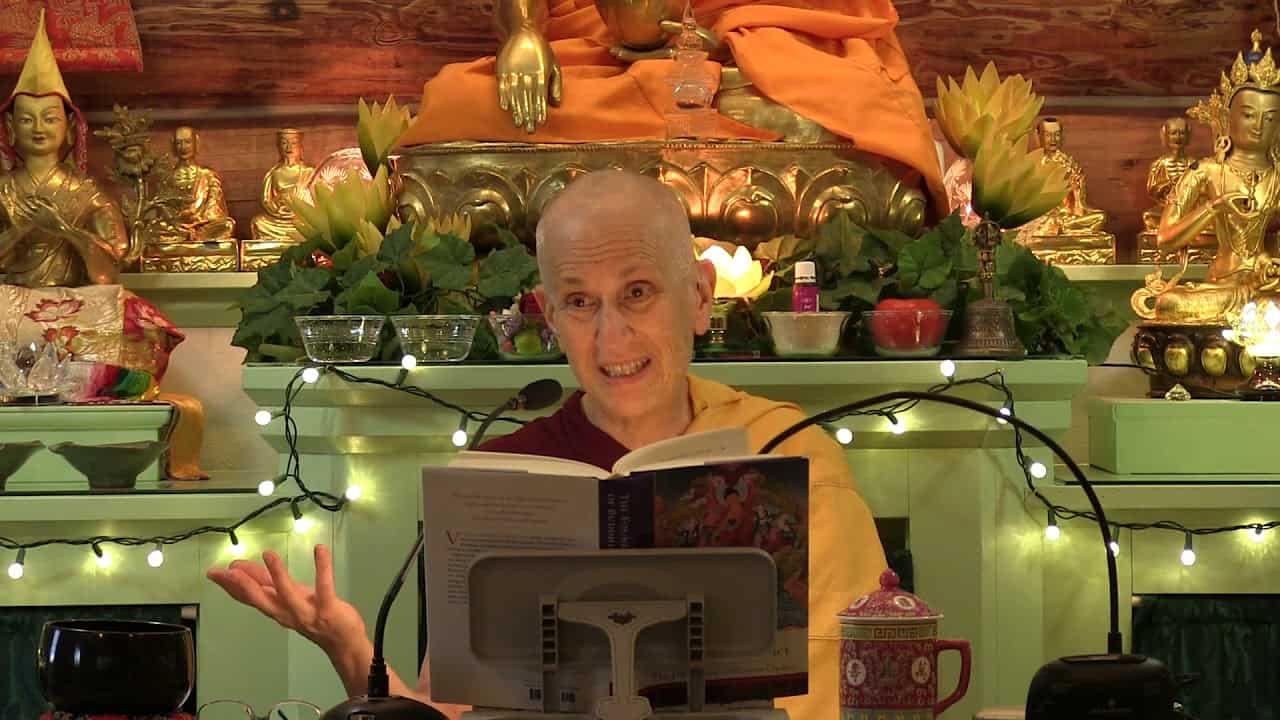Structuring a meditation session
25 The Foundation of Buddhist Practice
Part of a series of teachings given during a retreat based on the book The Foundation of Buddhist Practice given at Sravasti Abbey.
- When our spiritual mentors pass away
- Advice to spiritual mentors and disciples
- How to structure a meditation session
- Types of meditation
- Meditating on the lamrim
- Questions and answers
The Foundation of Buddhist Practice 25: Structuring a meditation session (download)
Contemplation points
- How does having a strong foundation in the Dharma and a good relationship with our spiritual mentors benefit us, even when our mentors are not nearby to answer our questions, give us guidance, and offer counsel?
- What does it mean to be a 21st century Buddhist? What can you do in your own practice to better embody this advice from His Holiness the Dalai Lama?
- Consider how a mind that is “steeped in seeing others’ kindness, appreciating it, and wishing them happiness is a peaceful mind.” How does meditation help us to cultivate this kind of mind? Imagine how your life might be different if you had a much deeper understanding of the Dharma cultivated through meditation practice. Make some examples.
- Review the meaning of stabilizing and analytical meditation. Make examples of how you could employ those in your practice.
- Review the meaning of meditation on an object and meditation to transform our subjective experience. Make examples of each.
- Consider how what you do in the break times between meditation sessions is very important. What are ways you can bring your meditation object into your daily life to deepen your understanding and gradually develop your mind?
Venerable Thubten Chodron
Venerable Chodron emphasizes the practical application of Buddha’s teachings in our daily lives and is especially skilled at explaining them in ways easily understood and practiced by Westerners. She is well known for her warm, humorous, and lucid teachings. She was ordained as a Buddhist nun in 1977 by Kyabje Ling Rinpoche in Dharamsala, India, and in 1986 she received bhikshuni (full) ordination in Taiwan. Read her full bio.


